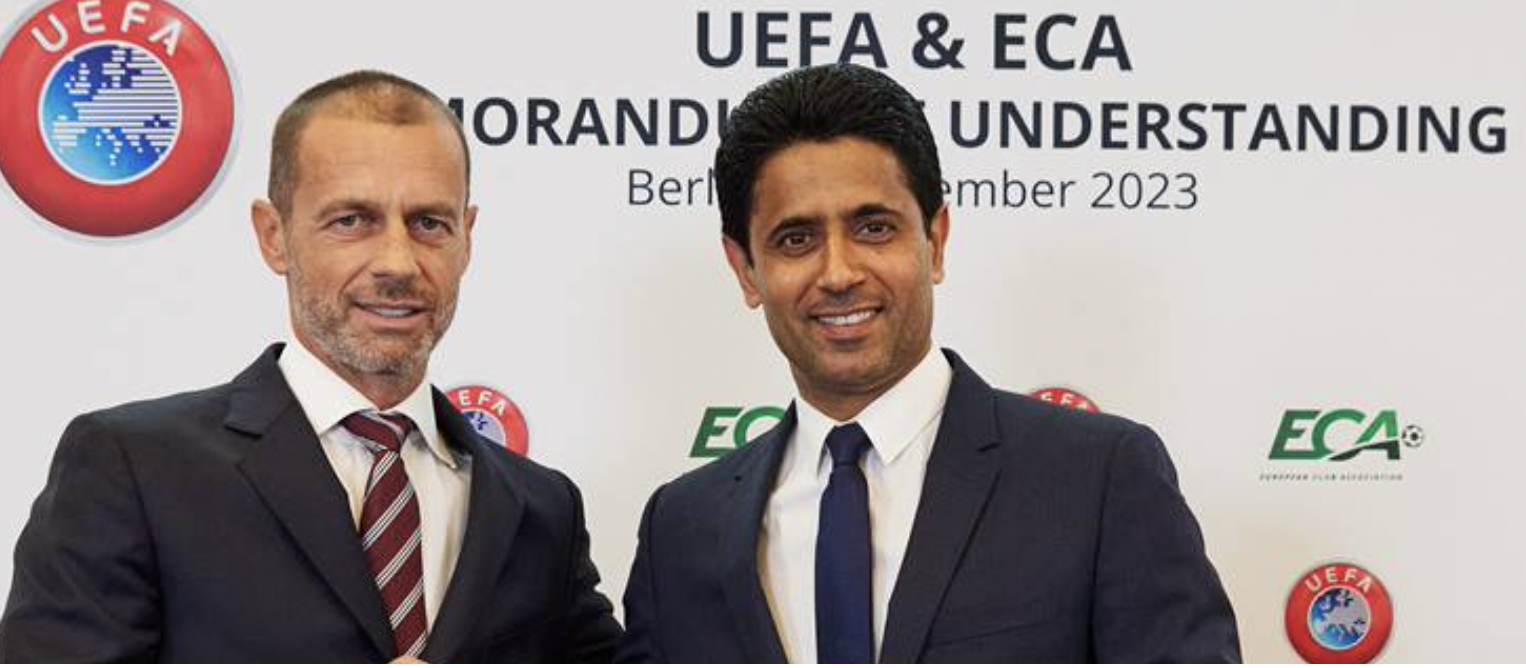By Paul Nicholson
September 6 – UEFA and the European Club Association (ECA) have renewed their co-operation agreement that recognises UEFA as the governing body of football in Europe but has seen the ECA’s increased involvement in both calendar and competition change, as well as its joint venture position in UEFA Club Competitions SA, the commercial entity tasked with developing club competition revenues.
UEFA and the ECA signed their first Memorandum of Understanding (MoU) 15 years ago. The new co-operation will run through to 2030.
The need for the agreement was emphasised when the proposed Super League club breakaway in 2021 challenged the authority and hegemony of UEFA.
UEFA said that “at the heart of this agreement lies a full commitment to strengthen the core principles of the European football pyramid championed by fans across Europe.” Specifically is safeguards the central role of UEFA and the open system of promotion and relegation that ultimately culminates in qualification for European competitions.
UEFA President Aleksander Čeferin (pictured left) said: “This new MoU builds upon the solid foundation of cooperation between UEFA and the ECA to enhance the open and values-based European football pyramid celebrated by fans worldwide. It will bring continuity, stability and healthy growth that will benefit every corner of Europe… Our cooperation will strengthen European football, and we look forward to it resulting in the further development and success of the game.”
Following the chaos of the ill-fated Super League proposal, the ECA and UEFA have grown significantly closer together in terms of co-operation and planning. This has manifested itself through a new revenue distribution model for the 2024-2027 cycle that has resulted in a significant increase in solidarity payments to clubs in domestic league competitions.
In the new cycle to clubs not participating in the league phase of UEFA competitions will increase to a total of 10%. The breakdown of that 10% sees 3% reserved for clubs eliminated in the qualifying rounds, and 7%, (up from the current 4%) to clubs who have not participated at all. In money terms that is €440 million per season (€1.32b billion over the cycle).
A further change in the new distribution system for participating clubs is a greater focus on participation (from 25% to 27.5% to be shared equally) and a big emphasis on performance – very much in line with the European sports model rather than the closed league proposal at the heart of the Super League.
The financial change to achieve these increases comes via the merger of the two former financial distribution pillars of market pool and coefficient. Essentially it is a 10% drop in from 45% to 35% to edge the financial emphasis away from tradition and ‘entitlement’ towards sporting achievement.
ECA chairman Nasser Al-Khelaïfi (pictured right) said: “This renewed Memorandum of Understanding between ECA and UEFA until 2030 is fantastic news for all European clubs, and for everyone concerned with the stability and prosperity of European club football. The MoU formalises agreements between UEFA and ECA on a wide range of governance, representation, regulatory, financial and sporting matters and establishes solid foundations for the continued development of European club football.
“As the ECA family continues to rapidly multiply in size, representing clubs of all sizes in all corners of Europe, we very much look forward to our continued constructive, collaborative and trusted relationship with UEFA, ECA’s most important partner.”
Contact the writer of this story at moc.l1722058039labto1722058039ofdlr1722058039owedi1722058039sni@n1722058039osloh1722058039cin.l1722058039uap1722058039

